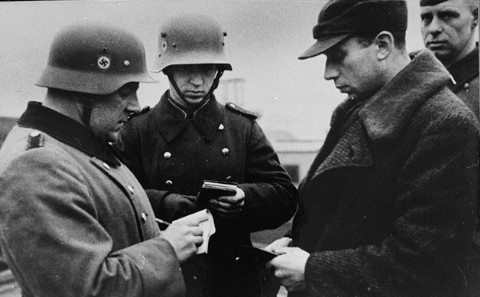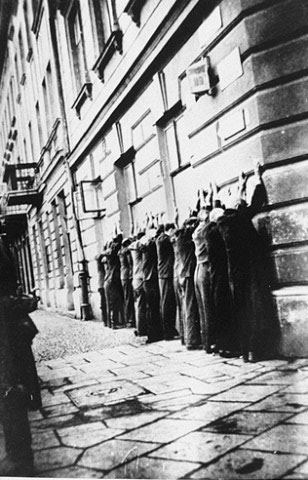| Home Page
All About Hitler Page
Holocaust Picture Page 1
Holocaust Picture Page 2
The Symbols of the Holocaust
The Ghettos
The Death Camps
Resistance
Favorite Links
|
|
|
GHETTOS:
Ghetto:
1 : a quarter of a city in which Jews were formerly required to live
2 : a quarter of a city in which members of a minority group live especially because of social, legal, or economic pressure
3 a : an isolated group b : a situation that resembles a ghetto especially in conferring inferior status or limiting opportunity
|
| |
During the Holocaust, Jews, Poles, gypsies and homosexuals were forced into isolation parts of the town or city called ghettos. These ghettos were surrounded by barbed wire and stonewalls. The people trapped in them were practically starved and although some were well-fed because others gave up their food to them. In these ghettos, the people were separated by age, and gender and slept on bunk beds that were four to five bunks high. Some men and women were allowed to visit the children, but were not allowed to entertain their children with music or teach them. Many of the adults ignored the rules imposed by the Nazis and taught their children without caring about the consequences. Some ghetto dwellers used packaged paper and pens brought in by others to teach their children. |

An Jewish man having his identification checked by some German guards |
| |
As rumors about the bad treatment of people living the ghettos reached other parts of Europe, officials from England and France decided to inspect the ghettos. Unfortunately, the Nazi party heard about this well in advance so they set up benches, parks, cafes, and gourmet food shops with people who were specially selected to be fed and act as though everything was perfect. The act went over very well, but as soon as the inspection was over, all the expensive things that had just been imported were taken out again from the ghetto and burned because no one would buy things that had been used by the Jews. Once the Jews were deported from the ghettos, German civilians moved into their houses. Many of the Jewish population died in the ghettos from being underfed or by getting sick from poor sanitary conditions. |

A line of Jewish people, about to be shot to death, against the wall of a building in a ghetto. |
| |
When the National Military Organization noticed a huge decline in numbers in the ghettos, the Nazi party explained the difference as people getting disease from being so close to the others and self-chosen starvation. Instead, the money earmarked to support the ghettos was being used to buy bombs, deport the Jewish and to buy guns. In 1943, after all the Jewish that were known to be in the surrounding areas were deported to ghettos and later to death or concentration camps, the numbers throughout Europe totalled sixty-thousand, the numbers started rolling in of deaths. Many of these left were able-bodied teenagers who were kept to work full time. And if someone refused to work at the ghettos or refused to follow the rules they were shot. Some were shot just because the officers had nothing else to do. Many more women survived then the men because the women would help each other out while the men believed in the phrase "every man for himself". Some women would also survive a little longer by doing "favors" for the commanding officers. |

The Jewish people in the back of a truck being shipped off to their deaths. |
|
|


